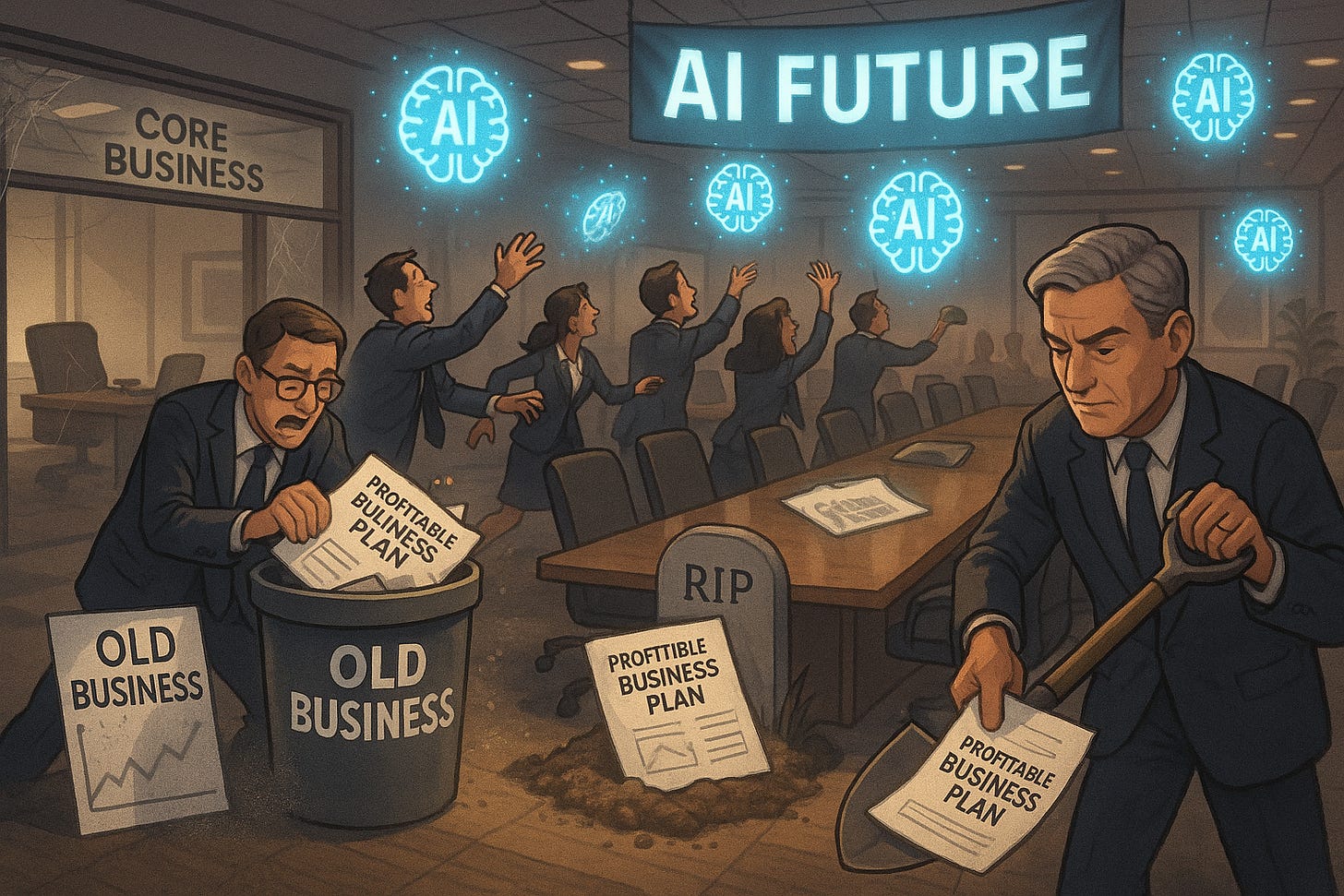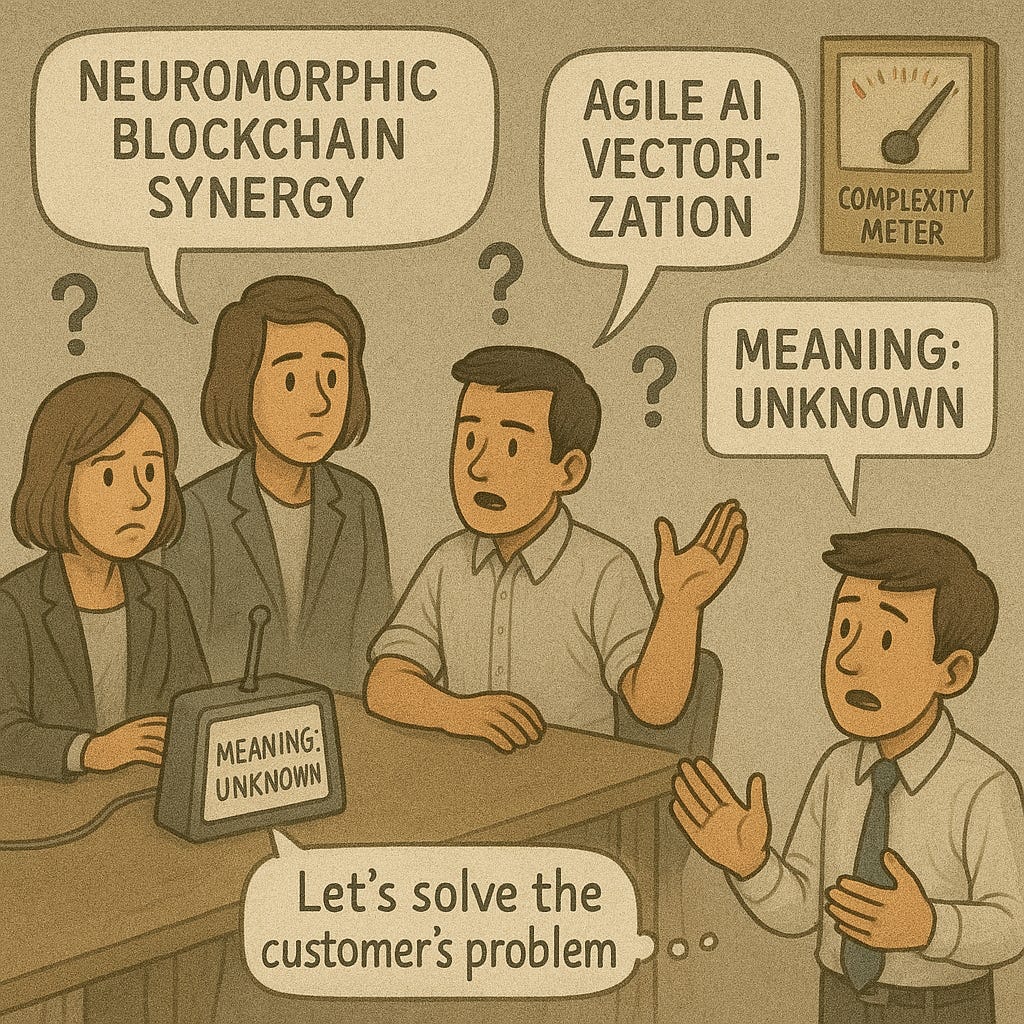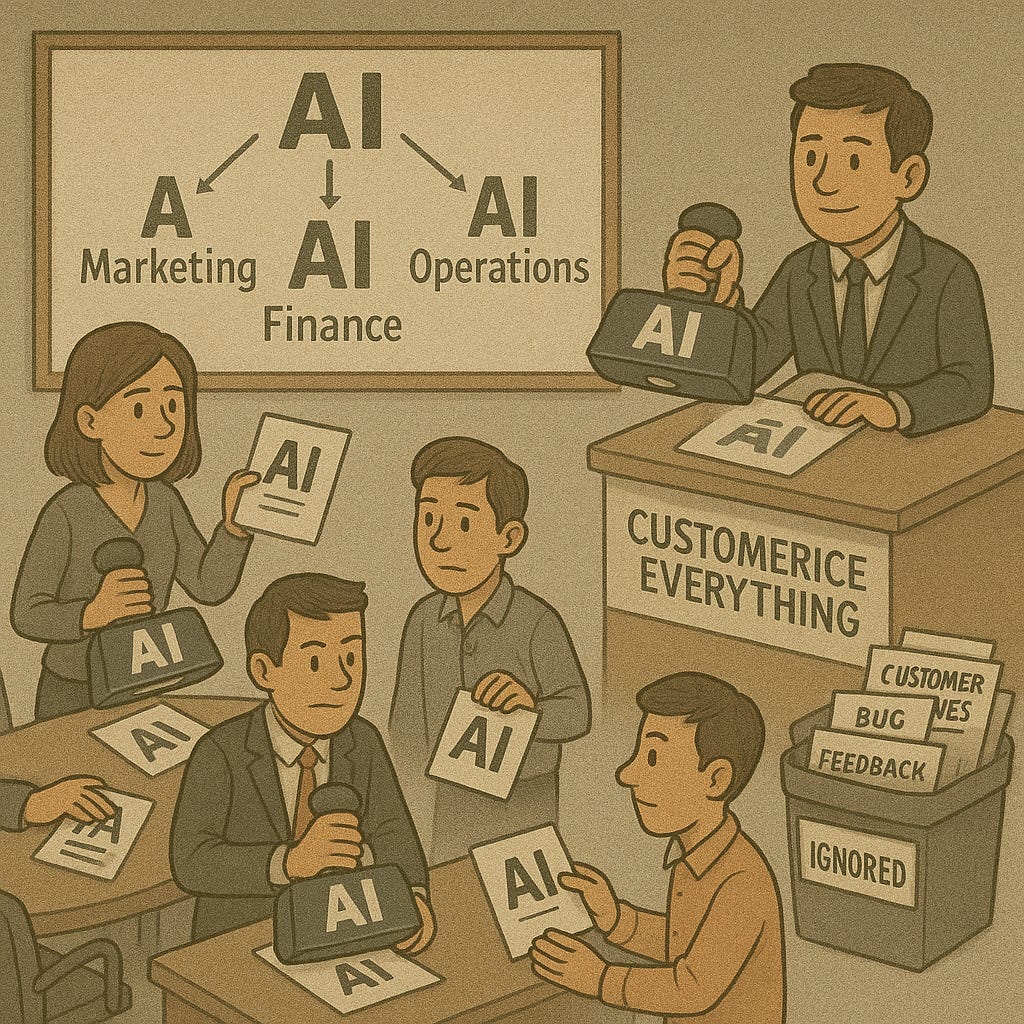You decided to read this. That means you think AI is an efficient way to destroy your business. You're right. AI destroys businesses faster than slow decline.
Follow these steps to transform your company into a failure case study.
1. Abandon Everything for AI
You have a core business that pays salaries and thrived for years. But it's boring. It lacks AI. AI is the future.
Let your past go. Focus only on the future.
Invest everything in AI. Ignore existing revenue streams. Let your core business drift. It survived this long—it can survive alone. Chase every AI fad instead.
Your customers will understand. Your services may deteriorate and your product may suffer, but it has AI. They'll appreciate that.
2. Divide and Lose
Split your company into thousands of mini organizations. Give each its own agenda. Create power struggles.
Everyone attends every AI conference. Nobody talks to each other. Most importantly, nobody talks to customers about their needs.
Each group builds its own AI solution. Your company should create useless agents, generative art plugins, and random chatbots. None should relate to your core business.
3. Gut Your Core Operations for AI Talent
Pull every quality engineer from core business operations. Watch something mysterious happen: unmitigated disaster.
Move all important talent from revenue-generating streams to chase the latest vendor offerings. Let your infrastructure crumble without talent and experience.
When questioned, remind everyone: "Transformation comes with pain."
4. Reward Wishful Thinking Over Results
Create incentives that celebrate big promises over delivered results. Judge employees on promise size, not achievements. Reward those who paint rosy AI pictures. Silence those who focus on practical problems and AI reality.
Value wishful thinking. Celebrate ridiculous infrastructure costs and technical debt accumulation. If someone proposes incremental implementation, remind them: "Big companies don't think small."
5. Choose Tools Over Processes
Obsess over evaluation frameworks that apply to all problems yet effectively solve none.
Always throw tools at problems. Ignore processes entirely. Incentivize people to drop the latest tool on every issue. Tech debt doesn’t matter.
Make dashboards so complicated they drown you in meaningless metrics. Never know actual system problems—make up answers instead. Your MBA prepared you for this.
Use "LLM as judge" for evaluating business outcomes. If an LLM says you're right, who are you to argue? You're just an algorithm's humble servant.
6. Never Look at Your Data
Data analysis is for junior analysts. Don't waste time applying domain expertise to your data. What could you find that someone with a fancy ML degree and no business sense wouldn't?
Trust your intuition. If it looks good, it is good. When someone produces counter-evidence, don't give them time. Remind them it's beneath you to examine data.
If you must look at data, buy the most complex analytical tool available. Simple Excel spreadsheets don't suit you.
7. Turn Everyone Into Jargon Joe
Don't listen to people who know. Listen to people who drop random jargon into conversations. Every meeting should become techno-babble where everyone stays confused because nobody understands anything.
Make obfuscation your competitive advantage. Clients should never understand your proposals. Business teams shouldn't know what they're participating in. If someone without a computer science degree understands you, you're failing.
Hide behind complexity. Simple isn't impressive.
8. Reduce AI to a Buzzword
AI should answer every business problem, operational issue, and need. If anyone does anything besides AI, they do nothing.
Improve margins? AI will do it.
Convert leads? AI will do it.
Retain talent? AI will do it.
Create a business strategy so lengthy and complicated that nobody reads it. Yet your strategy should focus only two letters: AI.
Never diagnose business problems.
Never talk about pragmatic solutions.
Never coordinate strategic efforts.
Be all over the place, because AI can be everywhere. When questioned, tell them to get up to speed on AI and read your lengthy strategy document.
The End Result
Follow these prescriptions and you'll confuse motion for progress, tools for strategy, and complexity for competence.
Your competitors will thank you for the learning experience. Your employees will find better companies. Your customers will discover better products and services.
But who cares if you lack good service or products? You have AI demos to show.
P.S. This post uses inversion. It is based on discussions with friends, colleagues, and many AI gurus - especially Greg & Hamel. To succeed with AI, do the exact opposite of everything above.









Love the recall of LGTM and Jargon Joe.